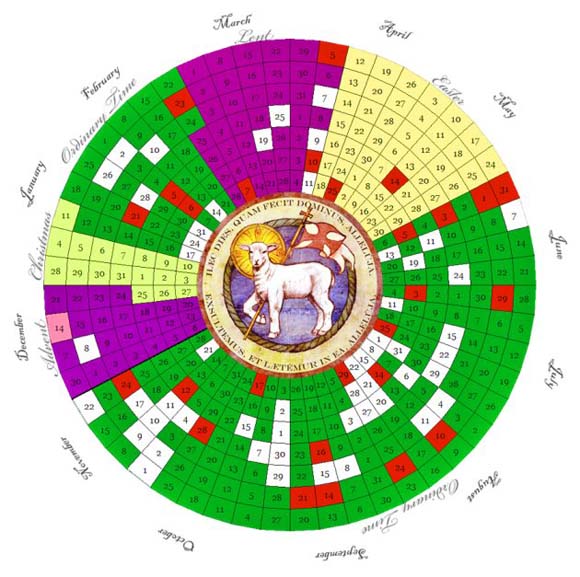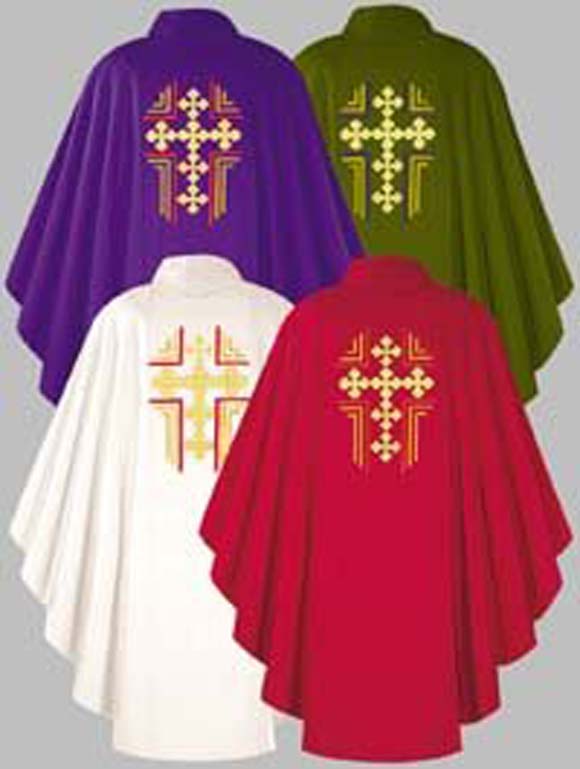
A-Z of the Mass: Year, Liturgical
1.74k
 Just as the world has the natural cycle of the seasons throughout the year, so the Church also celebrates with quiet, deliberate rhythm the seasons of the liturgical year. Unlike the endless cycle of pagans, the Church’s year regards time as linear. It has a beginning and will have an end. Whilst we may represent the calendar as a circle, it is better to think of it as a spiral. The passing hours allow us time to meditate on sacred things as we await the return of the Lord. Throughout the year our minds are raised to the sacred mysteries through the tones of the Church’s liturgy, the seasonal changes and the decor of our sacred places
Just as the world has the natural cycle of the seasons throughout the year, so the Church also celebrates with quiet, deliberate rhythm the seasons of the liturgical year. Unlike the endless cycle of pagans, the Church’s year regards time as linear. It has a beginning and will have an end. Whilst we may represent the calendar as a circle, it is better to think of it as a spiral. The passing hours allow us time to meditate on sacred things as we await the return of the Lord. Throughout the year our minds are raised to the sacred mysteries through the tones of the Church’s liturgy, the seasonal changes and the decor of our sacred places
The focus is the year is Christ and the salvation he brings. Therefore the year begins with the season of Advent, a season where we remember the world’s waiting for a saviour. This is a penitential season, reflecting the fallen pre-incarnation world. The liturgical colour is violet and the Gloria is omitted from the Mass. During this period we ourselves prepare to receive Christ and look towards His second coming. During Christmastide we rejoice in the Word made Flesh. The penitential seasons of Lent and Passiontide turn our minds to the Cross. Again the liturgical colour is violet, the Gloria is omitted and now even the joyful acclamation of ‘Alleluia’ is silenced.
 The Easter Triduum is the most sacred period in the Church’s year. Beginning with the celebration of the Lord’s Supper and the institution of the Eucharist, the Church is then physically stripped of all decoration and the Blessed Sacrament is removed, as we begin to follow Jesus to Calvary. No Mass is celebrated on Good Friday or Holy Saturday as we commemorate the death of the Lord and await his resurrection.
The Easter Triduum is the most sacred period in the Church’s year. Beginning with the celebration of the Lord’s Supper and the institution of the Eucharist, the Church is then physically stripped of all decoration and the Blessed Sacrament is removed, as we begin to follow Jesus to Calvary. No Mass is celebrated on Good Friday or Holy Saturday as we commemorate the death of the Lord and await his resurrection.
The Easter Vigil is a liturgical explosion as we celebrate the resurrection. As the Gloria resounds, the darkness of the Church is expelled, the veils removed and the bells ring to herald Christ’s victory over death and sin.
We of course celebrate the other mysteries of our faith throughout the year: the Ascension and Pentecost; the Immaculate Conception and Assumption of Mary; and all the Church’s feasts, but we must remember that our celebrations are not dry commemorations. The liturgical year allows us to celebrate and understand more fully the entire mystery of Jesus Christ, from his incarnation and birth until his ascension, the sending of the Holy Spirit, and the expectation of his return in glory. During the course of a year, the paschal mystery of Jesus — his passion and death, his resurrection and ascension, his sitting at the right hand of the Father and sending of the Spirit with the Father — is viewed from different angles, in different lights.All these moments make up one unified mystery which cannot be divided.


